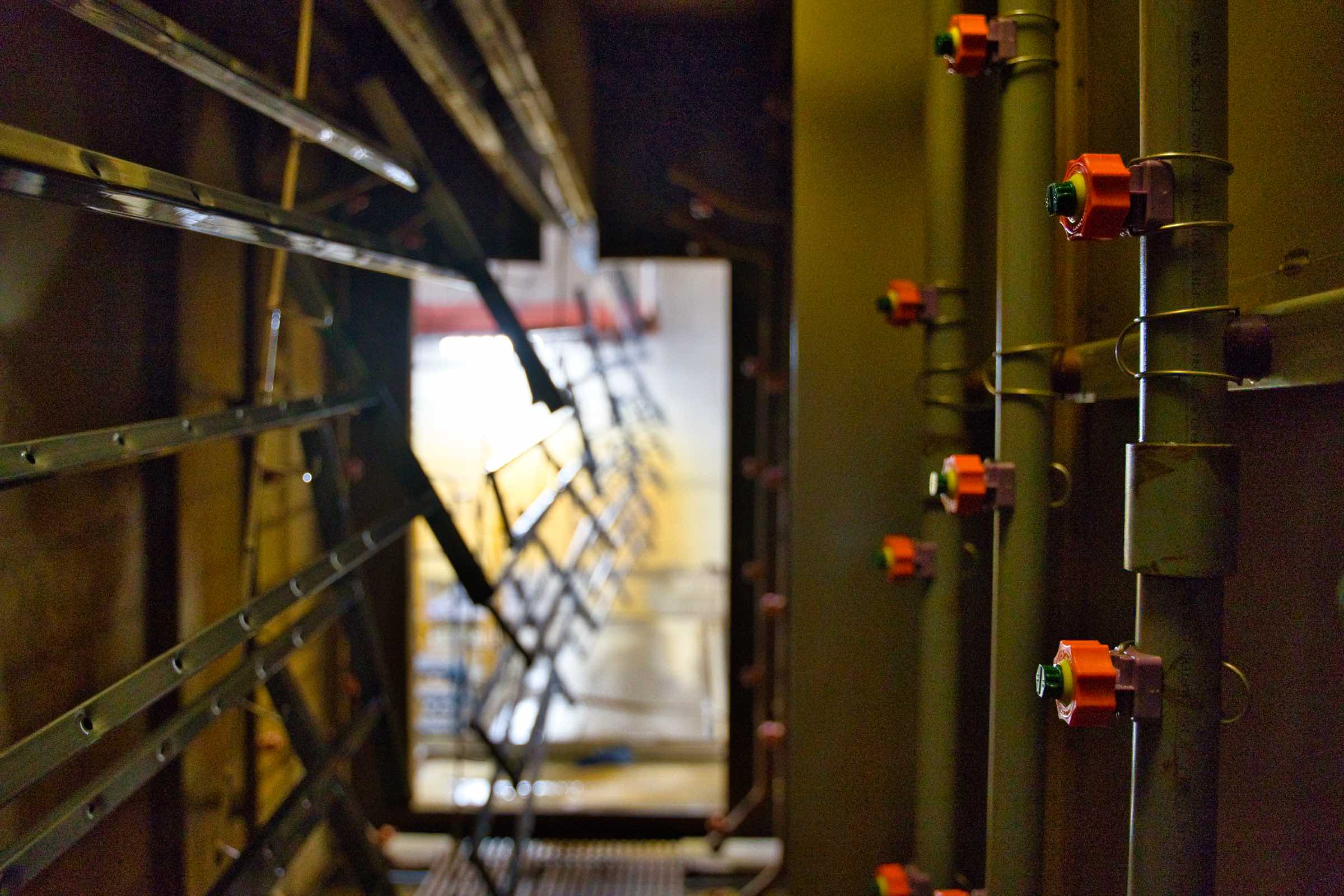Material Preparation
Before a powder coating can be applied, the surface of the substrate must be cleaned and treated to ensure optimal powder adhesion. If a surface is not properly prepared, any residues or deposits could impair powder adhesion, finish durability and aesthetics. Surface preparation varies by substrate, but may include cleaning, rinsing, etching and pressure blasting.
The pretreatment process is an essential step in preparing a metal substrate for powder coating. Our process significantly improves the quality, durability, and longevity of the final powder-coated finish. Pretreatment enhances the surface's properties by :
- Removing most oils, grime, and oxidation
- Chemical etching to increase bonding surface area, ensuring optimal adhesion and improved wear resistance
- For aluminum, transforming the problematic oxide layer into a corrosion-resistant layer that further promotes paint adhesion
Our quality and chemical technicians expertly designed and actively maintains our systems and processes to ensure all work is prepared to the highest industry standards. The diligent work of our team lays the groundwork for a trustworthy, durable, and long-lasting finish.

Stage 1 - Cleaner
The initial stage of the pretreatment process utilizes a spray of Iron Phosphate. Iron Phosphate reacts with the metal substrate, not only removing surface contaminants such as oils, dirt, and oxidation, but also chemically bonding with the metal. This results in a layer of iron phosphate crystals, or a "conversion coating," which significantly reduces the risk of corrosion. Furthermore, this phosphate layer offers a microscopically rough or "etched" surface which creates more surface area for subsequent coatings to adhere to, thus improving adhesion of the final powder coat.
Stage 2 - Rinse
The substrate is then sprayed with city water to rinse away residual Iron Phosphate solution and any loose debris that was removed during the initial cleaning phase. This step is crucial to stop the chemical reactions initiated by the Iron Phosphate and to remove any unbonded particles from the surface. It reduces the risk of chemical contamination and ensures the substrate is fully prepared for subsequent rinsing stages.
Stage 3 - Rinse
In this stage, a combination of city water and Reverse Osmosis (R.O.) water is used. R.O. water is a highly purified water, devoid of most mineral ions and impurities. The use of this water mix in the rinsing process minimizes the risk of depositing any salts or minerals present in city water onto the freshly cleaned and phosphatized surface, further ensuring its purity.
Stage 4 - Rinse
The fourth stage involves a final rinse using only R.O. water. This rinse stage is crucial as it removes any last traces of impurities or residual salts that might have been left on the substrate's surface. This results in an exceptionally clean substrate, free of any contaminants that might interfere with the conversion coating process in the next stage.
Stage 5 - Conversion Coating
This stage applies only to aluminum substrates. Aluminum has a naturally occurring oxide layer that provides some level of protection but can cause adhesion problems for coatings. A conversion coating is sprayed onto the aluminum in stage 5 to convert this oxide layer into a chromium-free conversion coating that provides excellent corrosion resistance and an optimal surface for paint adhesion. This further etches the aluminum, enhancing the surface area for the powder coat to adhere to and improving the final finish's longevity and quality.
Stage 5a - Rinse
During Stage 5a, the substrate is rinsed with reverse osmosis water. The main objectives of Stage 5a are to remove any unnecessary residual conversion coating, neutralize the surface, and prevent flash rusting. A small amount of conversion coating remains on the surface and acts as an adhesion promoter for applied powder. By completing this stage, the substrate is prepared for the subsequent post-treatment drying and paint application.


